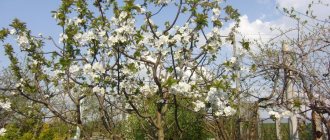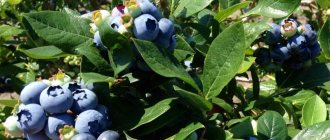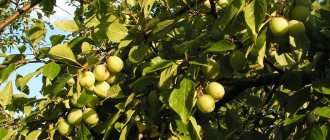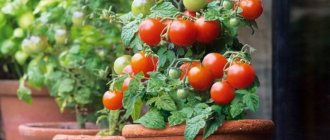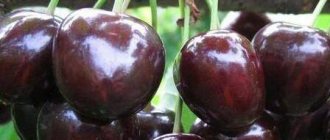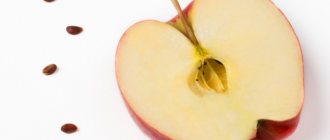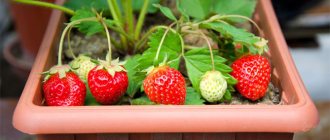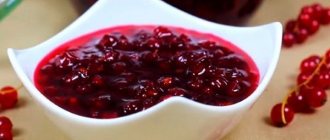Previously, during the Soviet era, cherry plantings occupied almost 30% of the total volume of fruit and berry plantings in the country. The crop was perhaps second only to the apple tree, that’s how popular it was among gardeners and loved by them. Today, the number of cherry plantings has noticeably decreased, primarily due to the development of fungal and viral diseases that can cause a lot of damage to plantings. But in all this, the work of breeders does not stop - they continue to search for new and ideal varieties that could fit perfectly into different territorial and climatic conditions. One of these varieties was the Novella cherry.
The variety has already been recognized as one of the best due to the fact that the fruits are of high quality, have remarkable external characteristics, and in all this the planting has high immunity and stress resistance. Even without outside intervention, cherry gardeners themselves can resist such dangerous fungal diseases as coccomycosis and moniliosis, which once caused a sharp reduction in plantings.
History of selection and region of breeding
Novella is a high-yielding, winter-hardy cherry variety, medium ripening, universal purpose.
Universal varieties also include Vyanok, Kharitonovskaya and Chernaya Krupnaya.
It was obtained in Orel on the basis of the All-Russian Scientific Research Institute for Breeding Fruit Crops through the hybridization of the Rossoshanskaya and Vozrozhdenie (it has a gene for resistance to coccomycosis, created by crossing cherries with bird cherry).
The creators are famous breeding scientists A.F. Kolesnikova and E.N. Dzhigadlo. In 2001, the Novella cherry variety was included in the State Register and recommended for cultivation in the Central Black Earth region.
Varieties such as Pamyati Vavilova, Rovesnitsa, Tamaris and Feya are also suitable for planting in this region.
Harvesting and ways to preserve it
You need to start harvesting as soon as most of the fruits are ripe. Usually the first ripened berries appear on the side that is best illuminated by the sun. In the middle of the crown, where sunlight penetrates less well, the fruits will ripen a little later.
There are several ways to collect cherries:
- pick berries without cuttings. Such fruits will not last long. They will have to be eaten or processed as soon as possible;
- picking cherries with cuttings. This is, of course, a labor-intensive process, but it will extend the shelf life of the berries. You need to pick carefully so as not to damage the thin shoots;
- cutting the cuttings with scissors. This method is good for long-term storage and is suitable for gardeners selling their goods on the market.
Ripe berries should be placed in small boxes in a thin layer. Immediately place damaged or bruised fruits in a separate container.
In the refrigerator at a temperature of 20C and a humidity above 80%, cherries will keep perfectly for almost 2 weeks. Freezing or drying berries significantly increases this period.
Novella cherry preparations are tasty and healthy
Housewives can make many different preparations for the winter from Novella cherries. Fragrant, slightly sour, jam is, perhaps, a hit at winter tea gatherings. The jam has an excellent taste. Compote will delight lovers of cool drinks, and those who like it hot will appreciate the liqueur.
Appearance of Novella cherry
Let us consider separately the appearance of the tree and the fruit.
Tree
Novella cherry is a medium-sized tree, about 3 meters high , with a rounded, spreading, slightly raised crown. The bark on the trunk and skeletal branches is brown, on the shoots it is brownish-brown.
The buds are small (about 4 mm), slightly deflected, and ovoid in shape.
The leaves are matte, elastic, dark green. Their shape is obovate with a pointed apex and a sharp base. The edges of the leaves have small oblique teeth.
There is one gland on the petiole and at the base of the leaf.
There are four flowers in the inflorescence. The corolla is free-petalled, white. The stigma of the pistil and the anthers of the stamens are located approximately at the same level.
The berries are tied on bouquet branches and last year's shoots.
Fruit
Novella fruits are dark burgundy, almost black. The diameter of the ripe berry is about 2 cm, and the weight is about 5 g. The shape of the cherries is wide-round, slightly blunt.
The stone is yellow, round, and easily separated from the pulp. The weight of the seed does not exceed 5% of the mass of the berry. The length of the stalk is 3.8-4 cm, the berry comes off easily, the separation site remains slightly moist.
The berries have a sweet and sour taste. The pulp is medium in density, dark burgundy in color, the berry juice is dark red. The fruits are easily transported and do not crack.
Diseases and pests
The main advantage of Novella cherries is its excellent resistance to the main stone fruit disease - coccomycosis.
Table: how to defeat diseases and pests
| Diseases and pests | Characteristic symptoms | Control measures | Prevention |
| Anthracnose | At the beginning of infection, dark spots appear on the berries, which grow and become covered with a pinkish coating. The fruits lose their taste, rot in rainy weather, and mummify in dry weather. |
|
|
| Scab | The berries become covered with spots, which crack over time. Yellow spots appear on the leaves, gradually darkening and drying out from the center to the edges. |
|
|
| Clusterosporiasis | Small red-brown spots appear on the leaves affected by the disease. The diseased tissue dies and crumbles. The leaf with holes soon falls off. In the middle stage of the disease, the fungus infects the fruits, turning them into dried out balls, which also fall off. |
|
|
| Cherry aphid | The first sign of aphid infestation is curled young leaves and deformed shoots. Aphids are especially dangerous for young cherries. Their growth slows down and the formation of fruit buds is delayed. The tree weakens, becomes vulnerable to disease, and tolerates winter frosts worse. | The treatment should be carried out before cherry blossoms. Iskra, Fitoverm, Actellik are suitable. The drugs should be alternated, as aphids develop immunity to pesticides. |
|
| Cherry weevil | The pest, which overwinters in the soil, climbs the tree in early spring and begins to eat buds, buds, flowers, and leaves. In the pulp of the ovary, the beetles gnaw through the hole right up to the seed and lay eggs there. The developed larva in the immature seed eats out a hole and feeds on the kernel. | Spray with Fitoverm immediately after flowering and again after a week. |
|
| Mining moth | The butterfly is nocturnal, so it is difficult to detect. The caterpillar chews out the soft tissue of leaves. Narrow and winding passages are visible on their surface. Premature leaf fall begins. The cherry weakens and loses resistance to disease. | You can get rid of caterpillars using Karbofos, Metaphos or Phosfamide. Treatment is carried out before flowering. |
|
Photo gallery: by what signs can disease and pests be identified?
Anthracnose in wet weather can quickly destroy most of the crop
Scab affects not only leaves, but also berries
Clusterosporiasis is a disease that causes significant damage to crops.
Cherry aphids greatly weaken the cherry, stopping its development
The cherry weevil gnaws through the fruit, leaving a larva inside
Cherry leafminer makes cherries vulnerable to disease
Main characteristics of the variety
In the Russian climate, it is better to grow cherries that are frost-resistant, self-fertile, and disease-resistant. Choosing the right variety helps preserve the harvest and avoid difficulties in care. Gardeners have already fallen in love with the capricious Novella.
The varieties Lyubskaya, Lebedyanskaya and Shchedraya also demonstrate frost resistance.
Here are its advantages:
- winter hardiness
- high yield
- resistance to coccomycosis and moniliosis
- excellent quality of fruits
- relative short stature
- partial self-fertility
TIP: To attract bees for pollination, 1 tbsp. l. honey is dissolved in 1 liter of boiled water and the buds and flowers are sprayed with the solution.
In the absence of pollinators, the partially self-fertile Novella cherry variety is capable of stably bearing fruit. But it’s better if pollinating varieties grow nearby.
The most suitable pollinators for Novella are Shokoladnitsa, Vladimirskaya, and Griot Ostheimsky.
Novella blooms in the second decade of May. The fruits ripen simultaneously in mid-July . The young tree begins to bear fruit in its fourth year.
Under favorable weather conditions, the yield from one mature tree is about 15 kg. If agricultural standards are observed, this variety is long-lived.
Among the disadvantages, it is necessary to note the average winter hardiness of flower buds. Returning cold weather can deprive the gardener of part of the future harvest.
TIP: To delay flowering, cover the soil around the tree trunk with an additional layer of snow and mulch. The ground under the crown will take longer to thaw, nutrients will reach the roots later, and the flowering will not be frozen.
Planting pit
Before planting Novella cherries, you need to prepare a planting hole. If you plan to plant plants in the spring, the site must be prepared in the fall. The size of the hole directly depends on the quality of the soil. If it is not very fertile, the hole should be larger. If the soil is clayey, the hole size should be 1 meter in diameter, 60 centimeters deep; on sandy and loamy soils, the hole size should be 0.8 meters in diameter and 0.5 meters deep. In order to improve fruiting, mineral and organic fertilizers must be added to the planting hole during planting. Mixed soil options:
- top layer of soil with humus or compost in a 1:1 ratio;
- top layer of soil with sand and humus 0.5:1:0.5.
To the soil prepared in this way, you can add chalk or limestone in the amount of 1 kilogram.
It is recommended to use the following mineral fertilizers:
- potassium sulfate;
- superphosphate;
- wood ash;
- potassium chloride.
They should be added when planting at the bottom of the prepared hole.
Planting and care
Let's look at the rules for planting Novella cherries to avoid mistakes that could ruin all the work.
- Where to plant? To plant Novella, it is best to choose a garden area that warms up well and is protected from the wind by trees, a fence or buildings.
Places with high groundwater levels are contraindicated: lowlands, edges of swamps, low plains. But if the groundwater is deeper than 2.5 meters, then watering will be needed in dry summers.This crop is quite demanding on the soil. The most suitable will be fertile with good air and moisture permeability. Thickening of cherry plantations should not be allowed.
Lack of ventilation leads to increased humidity in the crown, which promotes the proliferation of fungal spores. The optimal distance would be 3-4 m between trees.
- Preparing the planting site It is better to prepare pits for spring planting in the fall. The size depends on the nature of the soil: the less fertile it is, the larger the hole should be. On heavy clay soils, the diameter of the pit is 1 m, depth 0.6 m. On loam and sandy soils, diameter is 0.8 m, depth 0.5 m.
- Landing technology. It is customary to plant seedlings with an open root system in early spring, before the buds swell, and with a closed one, from April to June.
In the center of the planting hole, dig a hole the size of the root system and place the seedling there. The roots should be freely located. A support peg is placed next to the seedling for tying.
Afterwards, the roots are covered with soil, shaking the seedling so that all the voids between the roots are filled. When the roots are completely covered, the earth is carefully trampled down in a circle.Afterwards, the soil needs to be thoroughly watered to improve contact between the roots and the soil. When the top layer dries, loosen and mulch with a layer of dry soil.
ATTENTION! Deep planting is contraindicated! This leads to a lack of growth and a depressed appearance of the tree.
During the first year, the tree trunk circle must always be kept moist and loosened regularly.
It is recommended to purchase annual seedlings approximately 70-80 cm high, with mature wood and a developed root system.
If the seedling has a height of more than one and a half meters, and the bark is green in color, it means that it was obtained with a large amount of nitrogen fertilizer. Even a two-year-old cherry tree should not exceed 110 cm in height.
- First cut. Immediately after planting, before the buds open, the seedling must be pruned, since in the first year the tree experiences severe water and mineral starvation. The tree is usually formed with a standard of 25-40 cm.
If the planting material is crowned, then leave the central shoot and 4-5 side branches, which are shortened by a third.The central shoot is cut so that it is 20 cm higher than the side shoots.
And if the seedling is unbranched, then it is cut 10 cm above the expected standard. Below the pruning site there should be at least 5 well-developed buds.
- Caring for an adult tree. If fertilizers were added to the hole during planting, then fertilizing may not be applied for the first 3-4 years. Further application of fertilizers (every 3 years) will increase the yield and maintain the health of the plant.
In April, the tree trunk circle is mulched with rotted manure. Complex mineral fertilizers are poured onto the surface of the earth and incorporated into the soil.In early spring and late autumn, the tree trunk circle is dug up with a pitchfork. Almost all the buds of a young tree are actively starting to grow, which inevitably leads to thickening of the crown.
If pruning is not carried out, this will lead to a decrease in yield. Therefore, all strong branches growing inside the crown are cut out. The crown should be formed so that no more than 10 main branches remain. The branches of tree-like cherries can be shortened without fear.
Soil mixture options: topsoil and compost or rotted manure (fresh manure can burn the roots!) in a ratio of 1:1 topsoil, humus and sand in a ratio of 0.5:0.5:1
To improve fruiting, you can add 1 kg of limestone or chalk to the hole, mixing it with the soil. You can also add mineral fertilizers (superphosphate, potassium chloride or sulfate, wood ash) to the bottom of the pit or fertilize as the tree grows.
ON A NOTE! To avoid gum development, surgical operations other than cutting out dry branches and removing growths should be carried out a month before the buds swell. Shoots are a competitor for moisture and nutrients, as well as shelter and food for pests.
Subsequent care of the crop
A young tree planted in spring should be watered regularly until the end of the season. This way the root will receive enough moisture to take root well in a new place and successfully survive the winter. An adult tree is watered as needed, depending on the humidity and temperature of the surrounding air. Watering should be plentiful, but not excessive, so that the water does not stagnate. When the moisture is completely absorbed and the soil dries out a little, the soil should be loosened and weeds should be removed.
Important! After the tree is rooted, any local ground covers that have surface roots can be planted around it. These plants will help retain moisture in the ground and protect from heat.
To maintain soil fertility, it should be fed with organic fertilizers - mullein. Pig manure is strictly not allowed. In addition, Novella is fertilized with mineral supplements: in the spring with nitrogen, and in the fall with potassium and phosphorus. They should be used according to the instructions on the medications. The basic rule for fertilizing cherries is that a lack of fertilizer is better than an excess. The Novella variety requires regular pruning of old, bare, diseased and damaged branches.
You should also shorten some shoots to form the crown of the tree. Pruning will prevent the development of diseases and increase planting yield. When planted in the southern and Central Black Earth regions, cherries do without special winter shelters. You just need to provide protection from rodents - wrap the tree trunk with burlap or tie it with straw.
Description of culture
Although the variety is usually classified as a cerapadus, a photo of the Novella cherry tree shows that it bears little resemblance to bird cherry.
The cultivar took a powerful root system from the pollinator. Novella cherry forms a medium-sized tree about 3 m high. The raised crown is spreading, round, with straight branches of a brownish-brown color. With age, the shoots become bare.
The obovate leaves are serrated, with a pointed base and tip. Their surface is flat, matte, dark green. The petiole is up to 3 cm long along the entire length of the anthocyanin color. The buds are slightly deviated from the shoots.
Flat white flowers are collected together in groups of 4 on bouquet branches or last year's growth. Novella cherry berries are one-dimensional, weighing up to 5 g each. Their shape resembles a ball compressed at the top and base. The funnel is shallow, there is a small notch on the top of the head. The Novella cherry variety is a typical griot. The berry, juice and pulp are dark red. When the fruits are fully ripe, they do not crack and become almost black.
The separation of the berries from the stalk is average. The small (5.5% of the total weight of the cherry) pit is yellow, round, and easily separated from the pulp. Tasters rated the taste of the juicy sweet and sour berry at 4.2 points.
Brief characteristics of the variety
Cherry Novella is a potential long-liver. With regular care in the Central Black Earth Region, it produces abundant harvests and does not get sick.
Drought resistance, winter hardiness
Characterizing the Novella cherry variety as frost-resistant only makes sense in the region recommended for growing the crop - the Central Black Earth. The bark and cambium can withstand low temperatures well, but the buds can freeze in a particularly harsh winter.
Important! All characteristics of cherries relate only to the climatic zone in which they are recommended to be grown when registering varieties.
Novella's drought tolerance is fair but not outstanding. In hot summers, the tree must be watered 1-2 times a month.
Pollination, flowering period and ripening time
The Novella variety blooms in mid-May. Depending on weather conditions, the first buds usually open from the 10th to the 18th. The berries ripen simultaneously, in the mid-early period. The Novella cherry harvest begins after July 15th.
The variety is partially self-fertile. The best harvest can be harvested in the presence of pollinators - Griot Ostgeimsky, Shokoladnitsa, Vladimirskaya cherries. They need to be planted at a distance not exceeding 40 m from Novella.
Productivity, fruiting
Novella cherry begins to bear fruit 4 years after planting. The berries ripen simultaneously in mid-July. According to FGNBU VNIISPK, the average yield per hectare is 77.6 centners, the highest is 99.8 centners. These indicators are considered very good, especially since the tree does not grow tall.
Fruiting of the Novella cherry variety is unstable. In those years when flower buds are exposed to low temperatures, it produces few berries.
The Novella variety is relatively young - it was registered only in 2001. However, scientists claim that this cherry is a potential long-liver that, with minimal care, will bear fruit until a very old age. Based on the habit of the tree, we can conclude that its lifespan will be about 20 years.
Reference! Typically, cherries up to 5 m high grow in the garden for 15-20 years, above 5 m - 25-30. Naturally, the possibility of total freezing, cocomycosis, or other factors dangerous to the life of the crop is not taken into account here.
Area of application of berries
The Novella variety has a universal purpose. Its sweet and sour black berries can be eaten fresh, made into jam, desserts and other sweets. Like all griots, Novella's fruits are juicy. Thanks to the Maak bird cherry genes, they have a subtle bird cherry aroma. Particularly tasty products from Novella cherry processing are juices, wines, liqueurs and other drinks.
Resistance to diseases and pests
The Novella variety is a cerapadus, therefore, it is related to bird cherry. Because of this, it is less often affected by pests than other cherries. Resistance to coccomycosis, moniliosis and other fungal diseases is high.
Advantages and disadvantages
The Novella variety is one of the best modern varieties. It is too early to judge all its merits - it was introduced not so long ago. But Novella cherry received a protective patent for 35 years, which speaks of its exceptional qualities. Among the positive aspects of the variety it should be noted:
- High resistance to coccomycosis and other fungal diseases.
- Partial self-fertility.
- Potentially long productive life of the tree.
- High yield.
- Dessert taste and universal purpose of berries (score – 4.2 points).
- High resistance to low temperatures.
- Harmonious ripening of berries.
- A small bone.
- The berries are large.
- The fruits are resistant to cracking.
- The berries have an attractive appearance, one-dimensional.
Among the disadvantages:
- The resistance of Novella cherry buds to frost is average.
- Instability of fruiting.
- Old branches are exposed.
- Inability to grow the Novella variety in the northern regions.
- Fruits do not always break off cleanly from the stem.
History and description of Novella medium-ripening cherries
A cherry variety called Novella appeared not so long ago, at the turn of the century, within the walls of the All-Russian Research Institute of Pesticides by crossing the Rossoshanskaya cherry with the coccomycosis-resistant donor Vozrozhdenie.
Since 2001, it has been recommended for cultivation in the Central Black Earth Region, however, good frost resistance indicators allow Novella trees to be cultivated in more severe climatic conditions.
In terms of ripening time, cherries are classified as mid-ripening varieties.
Flowering begins in mid-May, and after about 2 months (July 15–20) the berries can already be picked.
Ripening is simultaneous, and since the fruits are not prone to shedding, harvesting can be done at one time when the entire crop is ripe.
Trees begin to bear fruit from 3–4 years of age, but productivity is unstable - in one year the harvest can be maximum (15–20 kg per cherry), and in the next it can be very low.
Subject to compliance with all agrotechnical standards, Novella trees are considered long-lived. They easily tolerate frosts and temperature changes, but the same cannot be said about flower buds - return frosts in the spring can easily destroy part of the crop.
Resistance to the most common cherry diseases - moniliosis and coccomycosis - is above average.
Characteristics of the tree and fruits
Novella trees are compact and low. In adulthood, their height does not exceed 3 m. The crown is medium dense, round, slightly raised.
The shoots are straight and smooth. The bark on the trunk and skeletal branches is brown, young shoots are brownish-brown in color.
The leaves are dark green, obovate, narrowed at the base, pointed at the apex, jagged at the edges.
The surface of the plate is matte, which is unusual for cherries; the petioles are short (29–30 mm), reddish-brown. Inflorescences form on last year's growths and bouquet branches.
The fruits are quite large (4.5–5 g) and visually attractive. When fully ripe, the skin becomes dark burgundy, almost black, for which they can easily be confused with cherries. The shape of the cherry is round, slightly elongated and blunt at the top. The stone is small (5% of the total mass), easily separated. The peduncle is of medium length (about 4 cm).
The flesh is elastic, quite dense, dark burgundy. The juice has a rich ruby color. The taste of cherries is excellent, sour-sweet, without acid in the aftertaste, which is due to the high sugar content (11.5%) with an acidity index of 1.8%. The use of the fruit is universal. They tolerate transportation well and do not leak, but in particularly humid summers they can crack.
Advantages and disadvantages
Like any other stone fruit crop, Novella has its strengths and weaknesses. The advantages of the variety include the following indicators:
- high resistance to cold, pests and diseases;
- decorative and relatively low-growing trees, which save space on the site and simplify harvesting;
- low maintenance requirements;
- the ability to self-pollinate, albeit partially;
- excellent presentation and sweet, cherry-like taste of the fruit.
Gardeners also note that the crop’s requirements for soil composition are slightly too high, but this problem can be solved with fertilizers and proper care.
“Review of the best varieties of cherries”
In this video you will learn about the best varieties of cherries.
Have questions and need answers? Specialist

